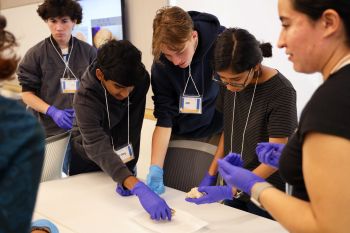Whether or not a teen puts on a costume for Halloween, they’re exploring that question and trying on identities in other ways as they tackle the major developmental task of figuring out who they are and who they want to be. As youth move from space to space, even throughout the same day, different aspects of their identity may be salient at different points in time.
As they explore possible selves, young people need:
- Agency in being able to say, “This is who I am, this is what I value, and this is how I want to be seen on this particular day.”
- Role models and positive feedback from peers and adults can help them build a sense of who they are and who they can become.
- Access to images and messages, including classroom lessons, and images seen in movies, TV, and the internet, that affirm and support pride in their racial, gender, and sexual identities.
- The freedom to define for themselves how race, gender, and sexuality fit into their complex, multi-dimensional identity.
The adolescent years are a window for exploration and discovery. Youth need opportunities to show and express that their identities may still be in flux. On both Halloween and during adolescence, we seek our own answer to the question, “Who do you want to be?” by seeing what’s out there and trying things on.



